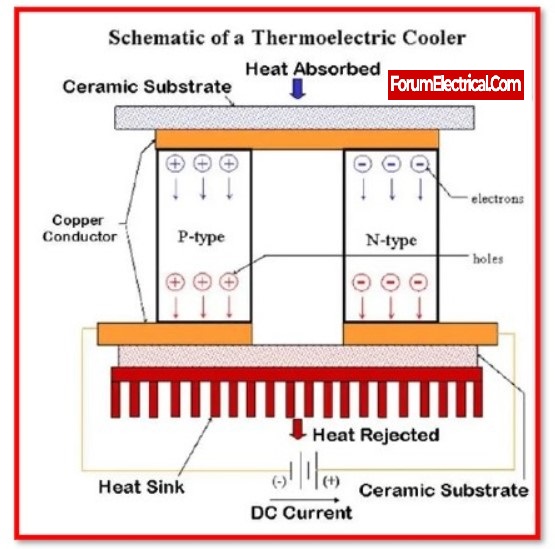The Seebeck effect is a phenomenon in which a voltage is generated between the ends of a conductor when the temperature at one end is different from the temperature at the other end. It is named after the German physicist Thomas Johann Seebeck, who first described it in the early 19th century.
Define The Seebeck effect?
The Seebeck effect is based on the fact that the movement of charge carriers, such as electrons, in a conductor generates heat. When a temperature difference is applied across a conductor, the charge carriers at the hot end have more kinetic energy than those at the cold end, leading to a net flow of charge from the hot end to the cold end. This flow of charge creates a voltage across the conductor, which can be measured using a voltmeter.

The magnitude of the voltage generated by the Seebeck effect is proportional to the temperature difference across the conductor and the properties of the conductor itself. Different materials have different Seebeck coefficients, which describe the voltage generated per unit temperature difference.

The Seebeck effect is the basis for the operation of thermoelectric generators, which are devices that convert heat into electricity. They work by using the Seebeck effect to generate a voltage across a conductor, and then using that voltage to drive a current through an external load, such as a light bulb or a battery.
The Seebeck Coefficient:
The Seebeck coefficient is the voltage produced between two points on a conductor when a temperature difference of 1o Kelvin is maintained between them. At room temperature, one such copper constantan combination has a Seebeck coefficient of 41 microvolts per Kelvin.
S = ΔV/ΔT = (Vcold − Vhot)/(Thot-Tcold)
Where,
- ΔV signifies the voltage difference obtained by introducing a small temperature change (ΔT) along the material.
- ΔV is defined as the voltage on the cold side minus the voltage on the hot side.
If the difference between Vcold and Vhot is negative, the Seebeck coefficient is negative.
If ΔT is considered to be small.
As a result, we can define the Seebeck coefficient as the first derivative of the produced voltage with regard to temperature:
S = d V /d T
The Spin Seebeck Effect:
However, it was discovered in 2008 that when heat is applied to a magnetic metal, its electrons rearrange according to their spin. However, this rearrangement was not responsible for the generation of heat. This phenomenon is the same as the spin Seebeck effect. This effect was employed in the creation of quick and efficient micro switches.

Why does the Seebeck coefficient rise with increasing temperature?
Electrical conductivity increases with increasing temperature, showing semiconductor characteristics. The high Seebeck coefficient and low electrical conductivity of CuAlO2 are due to the charge holes’ high effective mass.
Which sensor detects the Seebeck effect?
The thermocouple is an electrical device that consists of two dissimilar metal joints joined together. It is employed as a temperature sensor. It operates on the Seebeck effect principle.
Applications of the Seebeck effect:
- Thermoelectric generators have a number of potential applications, including power generation for remote or off-grid locations, waste heat recovery, and temperature sensing. They are particularly useful in situations where other forms of power generation are not practical, such as in spacecraft or in remote areas where access to fuel is limited.
- This Seebeck effect is frequently employed in thermocouples to measure temperature variations or to activate electrical switches that turn the system on or off. Thermocouple metal combinations that are commonly utilised include constantan / copper, constantan / iron, constantan / chrome, and constantan.
- The Seebeck effect is employed in thermoelectric generators, which serve as heat engines.
- These are also utilised in some power plants to convert waste heat into extra power.
- In addition to their use in thermoelectric generators, the Seebeck effect and related phenomena, such as the Peltier effect and the Thomson effect, have a number of other applications in fields such as thermometry and thermophysics. They are also used in the study of thermoelectric materials and devices.
Limitations of the Seebeck effect:
One disadvantage of thermoelectric generators is that they are not very efficient. The efficiency of a thermoelectric generator is typically measured by its figure of merit, which is a measure of the device’s ability to convert heat into electricity. Most thermoelectric generators have a figure of merit of less than 1, meaning that they convert less than 1% of the heat they absorb into electricity. This low efficiency limits the practical applications of thermoelectric generators, but researchers are working on developing new materials and designs that may improve their efficiency in the future.









